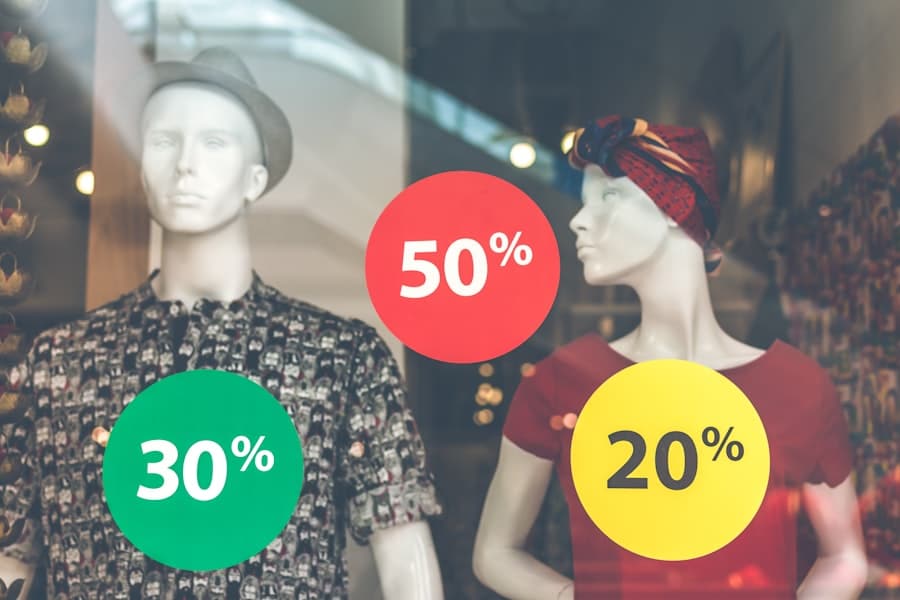The concept of experiential retail has evolved significantly with the advent of digital technologies, particularly in the context of the metaverse. This virtual universe, where users can interact with a computer-generated environment and other users, offers a unique platform for brands to engage consumers in ways that transcend traditional shopping experiences. In the metaverse, experiential retail is not merely about purchasing products; it is about creating memorable interactions that resonate with consumers on a deeper level.
This shift is driven by the desire for brands to foster emotional connections with their customers, enhancing brand loyalty and encouraging repeat business. As consumers increasingly seek out experiences over material possessions, the metaverse presents an opportunity for retailers to innovate their approach to customer engagement. By leveraging immersive technologies, brands can create environments that allow consumers to explore, interact, and participate in their shopping journeys.
This transformation is not just a trend; it represents a fundamental change in how retail operates, blurring the lines between physical and digital spaces. The metaverse serves as a canvas for brands to paint their narratives, inviting consumers to step into their worlds and experience their offerings in a way that was previously unimaginable.
Key Takeaways
- Experiential retail in the metaverse is a new frontier that combines virtual reality and shopping to create immersive experiences for consumers.
- Virtual reality plays a crucial role in experiential retail by allowing consumers to interact with products and brands in a virtual environment.
- Creating immersive shopping experiences with VR involves using 3D models, interactive elements, and personalized virtual spaces to engage consumers.
- The advantages of using VR in experiential retail include increased customer engagement, personalized shopping experiences, and the ability to reach a global audience.
- Despite its potential, challenges and limitations of VR in experiential retail include high costs, technological barriers, and the need for consumer adoption.
The Role of Virtual Reality in Experiential Retail
Virtual reality (VR) plays a pivotal role in shaping the landscape of experiential retail within the metaverse. By providing users with a fully immersive experience, VR allows consumers to engage with products and brands in a three-dimensional space that feels tangible and real. Unlike traditional online shopping, where users are limited to static images and descriptions, VR enables shoppers to visualize products in a more dynamic context.
For instance, a consumer can don a VR headset and find themselves in a virtual store where they can pick up items, examine them from various angles, and even try them on virtually. Moreover, VR facilitates social interactions within the shopping experience. Users can invite friends to join them in the virtual space, allowing for shared experiences that mimic real-life shopping trips.
This social aspect enhances the overall experience, making it more enjoyable and engaging. Retailers can also incorporate gamification elements into their VR environments, encouraging users to explore different areas of the store or complete challenges to unlock exclusive offers. This not only makes shopping more fun but also drives consumer engagement and increases the likelihood of purchases.
Creating Immersive Shopping Experiences with VR
To create truly immersive shopping experiences using VR, retailers must focus on several key elements that enhance user engagement. First and foremost is the design of the virtual environment itself. A well-crafted virtual store should reflect the brand’s identity while providing an intuitive layout that guides users through their shopping journey.
For example, a luxury fashion brand might create an elegant virtual boutique with high-quality graphics that evoke a sense of exclusivity and sophistication. In contrast, a tech retailer might opt for a sleek, modern design that emphasizes innovation and cutting-edge technology. Another critical aspect of immersive shopping experiences is interactivity.
Retailers can incorporate features that allow users to manipulate products, such as rotating items or changing colors and sizes in real-time. Additionally, integrating augmented reality (AR) elements can further enhance the experience by overlaying digital information onto the physical world. For instance, a furniture retailer could enable users to visualize how a piece of furniture would look in their own home by using AR technology within the VR environment.
This level of interactivity not only captivates users but also empowers them to make informed purchasing decisions.
Advantages of Using VR in Experiential Retail
The advantages of utilizing VR in experiential retail are manifold, offering both brands and consumers unique benefits that traditional retail cannot match. One significant advantage is the ability to reach a global audience without the constraints of physical locations. Retailers can establish virtual storefronts that are accessible to anyone with an internet connection, allowing them to tap into new markets and demographics.
This global reach is particularly advantageous for niche brands that may struggle to find footing in traditional retail spaces. Additionally, VR provides valuable data insights that can inform marketing strategies and product development. By analyzing user behavior within the virtual environment—such as which products are most frequently interacted with or how long users spend in specific areas—retailers can gain a deeper understanding of consumer preferences and trends.
Furthermore, VR can enhance customer service by providing virtual assistance through avatars or chatbots, offering real-time support and guidance during the shopping experience.
Challenges and Limitations of VR in Experiential Retail
Despite its numerous advantages, implementing VR in experiential retail is not without challenges and limitations. One of the primary hurdles is the cost associated with developing high-quality VR experiences. Creating immersive environments requires significant investment in technology, software development, and content creation.
For many retailers, especially smaller businesses or startups, these costs can be prohibitive, limiting their ability to compete in the metaverse.
While VR has gained popularity, not all consumers have access to the necessary hardware or are familiar with how to use it effectively.
This digital divide can create barriers for certain demographics, potentially alienating segments of the market that may prefer traditional shopping methods. Additionally, there are concerns regarding motion sickness and discomfort associated with prolonged use of VR headsets, which could deter some users from fully engaging with virtual retail experiences.
Case Studies of Successful Implementation of VR in Experiential Retail
Several brands have successfully embraced VR technology to enhance their experiential retail strategies, showcasing its potential impact on consumer engagement and sales. One notable example is IKEA’s use of VR in its marketing campaigns. The company developed an app called IKEA Place that allows users to visualize how furniture would look in their homes using AR technology.
However, they also created immersive VR showrooms where customers could explore different room setups and interact with products virtually. This innovative approach not only helped customers make informed decisions but also increased foot traffic to physical stores as users sought to see products in person after experiencing them virtually. Another compelling case study is Nike’s “NIKELAND,” a virtual world created on Roblox where users can engage in various activities while exploring Nike’s product offerings.
In this immersive environment, players can customize their avatars with Nike gear and participate in games that promote physical activity. By blending gaming with retail, Nike has successfully captured the attention of younger audiences who are increasingly spending time in virtual spaces. This strategy not only enhances brand visibility but also fosters community engagement among consumers who share similar interests.
The Future of Experiential Retail in the Metaverse
As technology continues to advance, the future of experiential retail in the metaverse looks promising yet complex. The integration of artificial intelligence (AI) alongside VR will likely play a significant role in shaping personalized shopping experiences. AI algorithms can analyze consumer behavior patterns and preferences to curate tailored recommendations within virtual environments, enhancing user satisfaction and driving sales conversions.
Moreover, as 5G technology becomes more widespread, it will facilitate smoother and more responsive VR experiences by reducing latency issues that currently hinder some applications. This advancement will enable retailers to create even more intricate and interactive environments that captivate consumers’ attention for longer periods. Additionally, as more brands recognize the value of experiential retail in the metaverse, we can expect an influx of innovative concepts that push the boundaries of traditional retail paradigms.
The Potential Impact of VR on Experiential Retail
The potential impact of virtual reality on experiential retail is profound, offering brands an unprecedented opportunity to connect with consumers in meaningful ways within the metaverse. By creating immersive environments that prioritize interactivity and engagement, retailers can foster emotional connections that drive brand loyalty and encourage repeat purchases. While challenges remain—such as cost barriers and accessibility issues—the successful implementation of VR by pioneering brands demonstrates its viability as a transformative tool for retail.
As we move forward into an increasingly digital future, it is clear that experiential retail will continue to evolve alongside technological advancements. The metaverse represents not just a new frontier for shopping but also a reimagining of how consumers interact with brands and products. With ongoing innovation and creativity, VR has the potential to redefine the retail landscape, making shopping an experience that transcends mere transactions and becomes an integral part of consumers’ lives.
A related article to “How VR Is Powering Experiential Retail in the Metaverse” is a review of Samsung smartwatches available at enicomp.com. This article discusses the features and benefits of Samsung smartwatches, which could potentially enhance the retail experience in the metaverse by providing users with convenient access to notifications, health tracking, and other useful functions right on their wrists. Integrating smartwatches with VR technology could further revolutionize the way consumers interact with virtual retail spaces.
FAQs
What is the metaverse?
The metaverse is a collective virtual shared space, created by the convergence of virtually enhanced physical reality and physically persistent virtual reality.
What is VR?
VR, or virtual reality, is a simulated experience that can be similar to or completely different from the real world. It is typically delivered through a headset and allows the user to interact with a 3D environment.
How is VR being used in experiential retail?
VR is being used in experiential retail to create immersive shopping experiences for customers. This can include virtual try-on for clothing and accessories, virtual showrooms, and interactive product demonstrations.
What are the benefits of using VR in experiential retail?
Using VR in experiential retail can provide a more engaging and personalized shopping experience for customers, leading to increased brand loyalty and sales. It also allows retailers to showcase their products in a unique and innovative way.
What are some examples of VR-powered experiential retail in the metaverse?
Examples of VR-powered experiential retail in the metaverse include virtual stores where customers can browse and purchase products, virtual fitting rooms for trying on clothing, and virtual events and experiences hosted by brands.
What are the challenges of implementing VR in experiential retail?
Challenges of implementing VR in experiential retail include the cost of developing and maintaining VR experiences, technical limitations, and ensuring that the experiences are accessible and user-friendly for customers.



